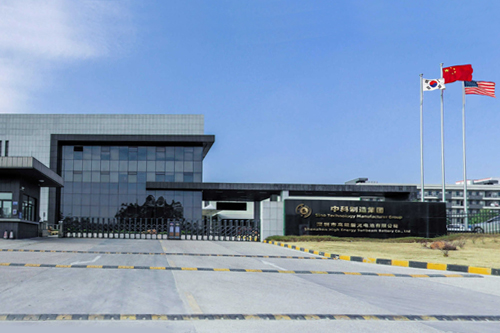The industrialization of lithium - ion batteries has been a remarkable
journey, driven by the increasing global demand for efficient energy storage
solutions across various sectors, most notably electric vehicles (EVs) and
consumer electronics.
1. Raw Material Sourcing and Processing
Lithium Extraction
Lithium, a key element in lithium - ion batteries, is sourced from two main
types of deposits: brine deposits and hard - rock minerals. Brine extraction
involves pumping lithium - rich brine from underground reservoirs. This brine is
then processed through a series of evaporation and chemical treatment steps to
isolate lithium carbonate or lithium hydroxide. For example, in the Atacama
Desert in Chile, one of the world's largest lithium - brine deposits, companies
use solar evaporation ponds to concentrate the lithium in the brine before
further chemical purification. Hard - rock mining, on the other hand, requires
the excavation of lithium - bearing ores such as spodumene. The ores are
crushed, ground, and then processed using chemical methods like flotation and
leaching to extract lithium - containing compounds.
Other Material Sourcing
Cathode materials such as lithium cobalt oxide (LiCoO₂), lithium iron
phosphate (LiFePO₄), and nickel - manganese - cobalt oxide (NMC) require the
sourcing of cobalt, iron, nickel, and manganese. Cobalt, which has been a
particularly crucial and often - volatile material in terms of price, is sourced
from mines mainly in the Democratic Republic of Congo. Nickel is obtained from
mines globally, with significant production in countries like Indonesia and
Canada. Manganese is also widely available in various regions. Anode materials,
typically graphite, are sourced from graphite mines, with China being a major
producer. The electrolyte, which contains lithium salts dissolved in an organic
solvent, requires the sourcing of high - purity lithium salts and suitable
organic solvents. Separators, usually made of polyolefin - based materials such
as polyethylene or polypropylene, are produced by specialized manufacturers.
2. Manufacturing Process
Electrode Production
Cathode Manufacturing: The manufacturing of cathode materials starts with
the synthesis of the active material. For example, in the case of NMC cathodes,
nickel, manganese, and cobalt precursors are mixed with lithium compounds and
then subjected to high - temperature sintering processes. The resulting active
material is then mixed with conductive additives like carbon black and a binder,
such as polyvinylidene fluoride (PVDF). This mixture is then coated onto an
aluminum foil current collector. The coating process is carefully controlled to
ensure uniform thickness and composition. After coating, the electrodes are
dried and pressed to improve their electrical conductivity and mechanical
strength.
Anode Manufacturing: Graphite, the most common anode material, is first
mixed with a binder. This mixture is then coated onto a copper foil current
collector. Similar to cathode manufacturing, the coating process is optimized
for thickness and uniformity. After drying, the anode electrodes are also
pressed to enhance their performance. In some cases, for advanced anodes like
silicon - based anodes, additional processing steps may be involved to improve
the compatibility of silicon with the rest of the battery components and to
address issues such as volume expansion during charging and discharging.
Cell Assembly
Once the anode and cathode electrodes are produced, they are assembled into
cells. The electrodes are wound or stacked together with a separator in -
between to prevent short - circuits. The electrolyte is then introduced into the
cell. This process is often carried out in a controlled environment to avoid
contamination, as even small amounts of impurities can significantly affect the
performance and lifespan of the battery. After the electrolyte is added, the
cell is sealed, and a series of formation and activation processes are
performed. These processes involve subjecting the cell to a controlled charging
and discharging cycle to form a stable solid - electrolyte interphase (SEI)
layer on the anode surface, which is crucial for the long - term performance of
the battery.
Module and Pack Assembly
Multiple cells are then combined to form battery modules. The cells can be
connected in series or parallel depending on the desired voltage and capacity of
the module. In a series connection, the positive terminal of one cell is
connected to the negative terminal of the next cell, increasing the overall
voltage. In a parallel connection, the positive terminals are connected together
and the negative terminals are connected together, increasing the capacity.
These modules are then integrated into a battery pack, which also includes a
battery management system (BMS). The BMS is responsible for monitoring and
controlling the charging and discharging of the battery pack, ensuring its safe
and efficient operation.
3. Quality Control and Standardization
Throughout the industrialization process, strict quality control measures
are implemented. Battery manufacturers use a variety of testing methods to
ensure that the batteries meet the required performance standards. These tests
include capacity testing, cycle life testing, safety testing (such as over -
charge, over - discharge, and short - circuit testing), and temperature -
performance testing. Standardization organizations play a crucial role in
setting industry - wide standards for battery performance, safety, and
environmental impact. For example, the International Electrotechnical Commission
(IEC) and the Society of Automotive Engineers (SAE) have developed numerous
standards related to lithium - ion batteries, which help to ensure
compatibility, safety, and reliability across different applications and
manufacturers.
Read recommendations:
3.2V 230Ah
Battery storage performance and self discharge.18650 battery 3.7v 2200mah
Power Output of Lithium-Ion Batteries for Power Applications
3.7v 2200mah 18650 lithium battery
3.7v 2200mah 18650 lithium battery











































 360° FACTORY VR TOUR
360° FACTORY VR TOUR
 Whatsapp
Whatsapp
 Tel
Tel Email
Email TOP
TOP